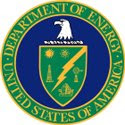 Time to scratch a name off your Energy Secretary candidate list? ABC's Jake Tapper and Martha Raddatz are reporting that retired Marine General James L. Jones has emerged as the leading candidate to serve as the National Security Adviser for President-elect Obama.
Time to scratch a name off your Energy Secretary candidate list? ABC's Jake Tapper and Martha Raddatz are reporting that retired Marine General James L. Jones has emerged as the leading candidate to serve as the National Security Adviser for President-elect Obama.The former head of NATO and U.S. forces in Europe, Jones is currently president and CEO of the Institute for 21st Century Energy. A move to the NSA could provide synergies with the work done at the ITCE; where energy policy is viewed as integral to national security.
Click here for more NNN coverage on who will be in the Obama Cabinet.
Comments